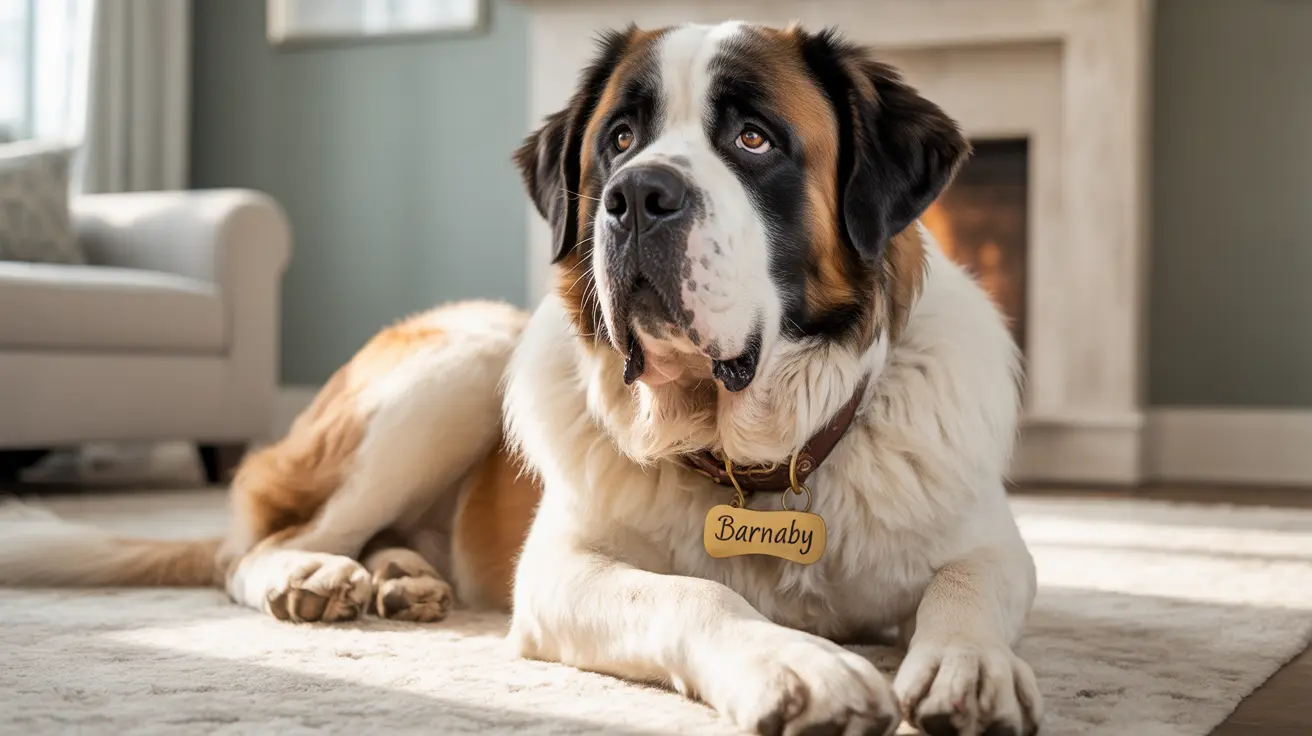The Saint Bernard stands as one of the most magnificent giant dog breeds, capturing hearts with its impressive size and gentle nature. Whether you're a current owner or considering bringing one of these gentle giants into your family, understanding the full scope of a fully grown St Bernard dog's characteristics and needs is essential for providing optimal care.
In this comprehensive guide, we'll explore everything you need to know about adult Saint Bernards, from their impressive physical dimensions to their special care requirements and health considerations.
Physical Dimensions of the Adult Saint Bernard
Adult Saint Bernards are truly massive dogs, with males typically weighing between 140-180 pounds and standing 28-30 inches at the shoulder. Females are slightly smaller but still impressive, weighing 120-140 pounds and reaching heights of 25-27 inches. Their characteristic broad head, muscular build, and dense double coat contribute to their commanding presence.
Growth and Development Timeline
Saint Bernards experience a remarkable growth journey, typically reaching their full size between 18-24 months of age. During their first year, they grow at an astounding rate, often gaining more than 100 pounds. This rapid growth requires careful management to ensure proper development.
Key Growth Milestones
- 3 months: 35-55 pounds
- 6 months: 65-100 pounds
- 12 months: 110-165 pounds
- 24 months: Final adult weight
Health Considerations for Adult Saint Bernards
Due to their large size, fully grown St Bernard dogs require specific health monitoring. Common health concerns include hip and elbow dysplasia, heart conditions, and bloat. Regular veterinary check-ups are essential to catch and address any issues early.
Nutrition and Exercise Requirements
Adult Saint Bernards need a carefully balanced diet to maintain their healthy weight and support their large frame. While they're not highly energetic, they require regular moderate exercise to stay fit and prevent obesity. However, exercise should be controlled to protect their joints.
Living with a Fully Grown Saint Bernard
These gentle giants need ample space to move comfortably and typically do best in homes with larger living areas. Despite their size, they're known for their calm demeanor and patience, making them excellent family companions when properly trained and socialized.
Grooming and Maintenance
The thick double coat of a Saint Bernard requires regular grooming to maintain its health and manage shedding. Weekly brushing, regular nail trimming, and attention to ear and dental hygiene are essential aspects of their care routine.
Frequently Asked Questions
How large does a fully grown Saint Bernard typically get in weight and height?
Adult male Saint Bernards typically weigh 140-180 pounds and stand 28-30 inches tall at the shoulder, while females weigh 120-140 pounds and reach 25-27 inches in height.
At what age does a Saint Bernard usually stop growing and reach full maturity?
Saint Bernards typically reach their full size between 18-24 months of age, with females maturing slightly earlier than males.
What special nutritional needs does a Saint Bernard puppy have to support healthy growth?
Saint Bernard puppies require specially formulated large or giant breed puppy food to ensure controlled growth and proper skeletal development. Multiple smaller meals are recommended over single large portions.
What common health issues should owners of fully grown Saint Bernards be aware of?
Common health concerns include hip and elbow dysplasia, heart conditions, bloat, and joint issues. Regular veterinary check-ups are crucial for early detection and management.
How should I care for the grooming and exercise needs of a large adult Saint Bernard?
Regular brushing (at least weekly), moderate daily exercise, and careful attention to dental and nail care are essential. Exercise should be controlled to protect joints, especially in hot weather.
Owning a fully grown St Bernard dog is a significant commitment that requires dedication to their specific care needs. With proper attention to their health, nutrition, and exercise requirements, these magnificent dogs can be wonderful family companions, bringing joy and gentle affection to their human families for many years.






